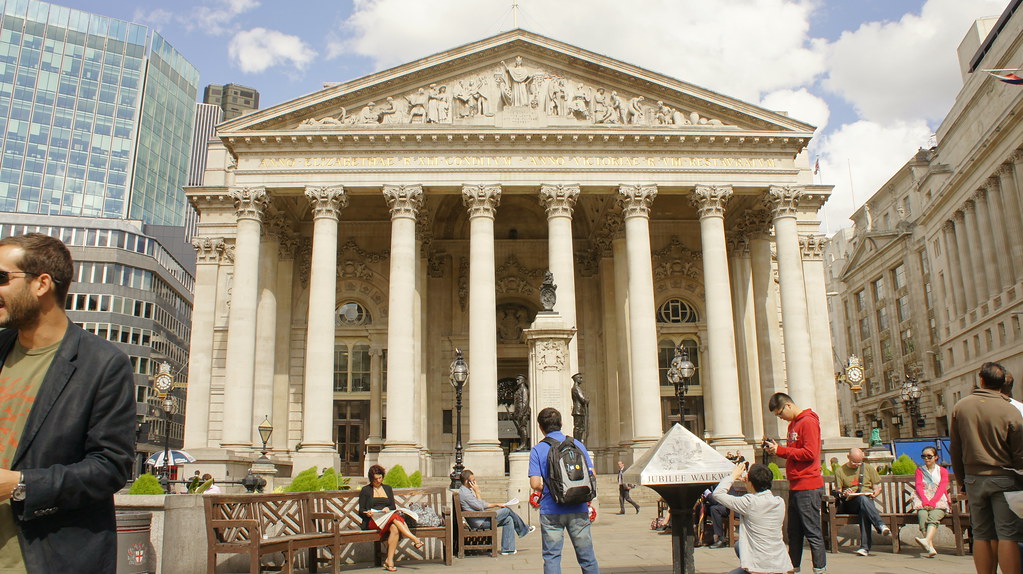
The Bank of England issued a warning on Wednesday, stating that the risk of a “sharp market correction” has increased. The central bank noted that equity market valuations appear stretched, particularly those associated with artificial intelligence-focused technology firms. The Bank of England is the latest in a series of global financial institutions and investors to weigh in on whether a speculative AI bubble is forming as markets enter the fourth quarter.
Record Concentration and High Risk
The central bank’s minutes from its latest meeting cited heightened geopolitical tensions, fragmented trade and financial markets, and pressures on sovereign debt as contributors to the increased risk. It stated that equity market valuations stood near all-time highs, partially driven by strong second-quarter earnings from U.S. tech firms.
The concentration of wealth in the largest companies is now at a historic level: “The market share of the top 5 members of the S&P 500, at close to 30%, was higher than at any point in the past 50 years,” the Bank of England reported. It specifically cautioned that valuations for AI-focused tech companies appear particularly stretched. The concentration risk, combined with soaring expectations for future earnings growth from AI, leaves equity markets “particularly exposed should expectations around the impact of AI become less optimistic,” suggesting any pullback on AI-related bets could trigger significant ripple effects.
The Bank of England further warned that “downside factors” that could force a re-evaluation of current high expectations include “disappointing AI capability/adoption progress or increased competition.”
It also highlighted that “Material bottlenecks to AI progress—from power, data, or commodity supply chains—as well as conceptual breakthroughs which change the anticipated AI infrastructure requirements… could also harm valuations, including for companies whose revenue expectations are derived from high levels of anticipated AI infrastructure investment.”
Broader Instability and Warnings
This gloomy outlook is compounded by several other factors: the private credit market has recently suffered following bankruptcy filings by automaker First Brands and auto finance firm Tricolor. Additionally, political uncertainty persists in France and Japan, and questions remain over U.S. President Donald Trump’s interference with the Federal Reserve, which the Bank of England noted is putting the credibility of the U.S. dollar at risk.
Investors remain keenly focused on AI stocks as earning season begins. Some strategists are confident that tech company valuations are backed by sound fundamentals, and Goldman Sachs remains cautiously optimistic, believing a bubble has not fully formed but still advising investors to “diversify.” Federal Reserve Chair Jerome Powell previously warned on Tuesday of “fairly highly valued” assets, though he did not explicitly name technology firms. The Bank of England concluded that these changes to the risk landscape “increases the risk that markets have not fully priced in possible adverse outcomes, and a sudden correction could occur should any of these risks crystallise.” Such a correction could have a knock-on effect for households and businesses already coping with high costs of living and borrowing costs.
What The Author Think
The Bank of England’s explicit comparison of current AI stock concentration to the 2000 dotcom peak is the clearest official signal yet that the global financial system is deeply fragile and excessively reliant on the continued, non-linear growth of a few technology giants. The core risk is that the market is valuing companies based on a future where AI must transform the economy, rather than its current profitability. By pointing to tangible bottlenecks—power supply, data, and infrastructure costs—the central bank wisely anchors the speculative fervor in physical reality, suggesting that the AI boom is not just a financial risk, but a systemic risk to the real economy that has not priced in the possibility of disappointment.
Featured image credit: James Mitchell via Flickr
For more stories like it, click the +Follow button at the top of this page to follow us.
